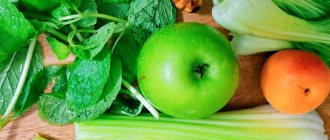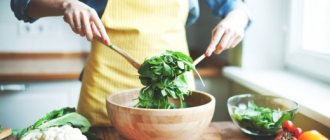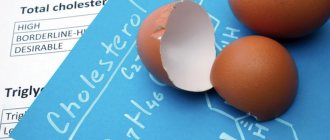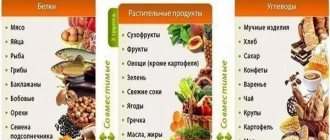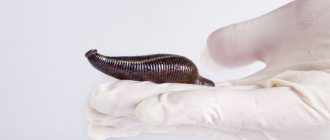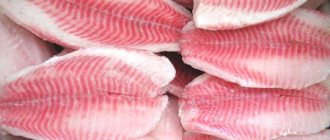- Minuses.
Everyone knows that vegetarianism and its forms exclude the consumption of animal products. But with seafood, everything is not so clear. Some admit the presence of all kinds of products in the diet, while others are ardent opponents of it. Let's figure out whether vegans eat fish, and what are the features of the diet of this trend.
Who is a vegan
Before raising the issue of eating fish, it is necessary to determine what food boundaries a vegan falls within. The “plant” movement is a whole way of life, following which a person will independently determine the conditions and diet that are comfortable for him. According to this principle, vegetarianism is divided into several movements.
The strictest is veganism, which involves consuming only products of plant origin. Is it possible to eat seafood and fish? Let's look at some pros and cons that will help you understand this issue in detail.
TOP 7 categories of meat substitute products
Did you know that buckwheat is the leader among cereals in terms of protein content. It contains about 12% of this substance. And this is not to mention the many other benefits of Ukrainians’ favorite porridge! Now do you understand why pediatricians and obstetricians-gynecologists so strongly recommend that children and expectant mothers eat buckwheat? But let's not get ahead of ourselves, let's talk about everything in order. So, here are seven product categories that will help you completely eliminate meat from your diet, but without losing the most important protein component.
- Eggs. Eggs are leaders among meat substitutes. And not only because they contain a lot of protein. But also because this protein is absorbed without residue. Eggs are easily digested by the human body and can easily replace meat products in the diet. Nutritionists, by the way, are convinced that it is better to eat a soft-boiled egg for breakfast than a similar product, hard-boiled. The content of protein and other nutrients in the first is actually higher than in the second. And all because heat treatment in the first case lasts less.
- Sour milk. Yogurt, fermented baked milk, kefir, whey, cottage cheese, feta cheese - all these products belong to the category of fermented milk. Fermented milk food, that is, food obtained from fermented milk, is characterized by a high content of not only the protein component, but also calcium. And what’s interesting: the lower the fat content of the product you choose, the higher the benefits your body receives from this food. And vice versa: the fattier the starter or sour milk, the less calcium and protein will enter the body. One serving of any fermented milk product is enough to cover your daily protein requirement.
- Shrimp, mussels, squid...Fish and seafood are the main alternative to meat products. They took third place only for one simple reason: vegetarians, as a rule, do not eat not only pork or chicken, but also fish. If you are not a vegetarian, but really want to break out of the captivity of meat “Kabbalah,” feel free to introduce more fish and everything that is caught in the sea or ocean into your diet. Or, at least, in a clean Ukrainian river. Fish and seafood provide protein that is easily digestible. The body does not need to spend a lot of energy breaking down this protein, so food in this category is quickly and easily digested. In addition, products that belong to this category contain vitamin E and vitamin D - substances, the amount of which determines the health of our eyes, hair and skin.
- Legumes. Vegetable protein is primarily legumes. For example, banal beans, which we are used to putting in real Ukrainian borscht. Or green peas, which crunch so perfectly in your mouth in summer. Or lentils, which are somewhat more expensive than peas, but have recently been at the peak of culinary popularity. Well, of course! After all, it’s not just delicious, but also incredibly healthy! Chickpeas also belong to this category of products. It is used to prepare a famous dish of Jewish cuisine - hummus. This nutritious and tasty dish is an ideal supplier of protein to the human body. But please note: in order for the protein contained in legumes to be absorbed as best as possible, you must also eat vegetables at the same time.
- Nuts : Walnuts are the leader in protein content in this category of products. In last place, according to this criterion, are almonds. But don’t let this knowledge confuse you: the nut mix can really replace meat dishes in your diet. By the way, it is precisely because of their protein nutrition that nutritionists recommend using nuts for snacks throughout the day.
- Mushrooms. Mushrooms are a rather controversial product. However, hardly anyone will argue that they contain a lot of protein. There really is a lot of protein component in the gifts of the forest. The only question is the poor absorption of the substance. Unfortunately, you can only get the required amount of protein if you eat a lot of mushrooms. And everything would be fine, but doctors and nutritionists do not recommend abusing the gifts of the forest. Chanterelles and saffron milk caps take quite a long and difficult time to digest. Therefore, there is a risk of tearing the gastrointestinal tract. You need to eat mushrooms in doses and only occasionally, from time to time. But overall, this is a very good alternative to meat.
- Cereals. According to Ukrainian culinary traditions, cereals are the most common side dish in our country. Banosh, made from corn flour, mamalyga, bulgur or the famous “Artek” - whatever grain you choose for dinner today, along with it you will get protein and the necessary portion of proteins. It is advisable, of course, not to burden the porridge with oil, although the proverb says that it is impossible to spoil one with the other. It will be better if you eat unprocessed grains. For example, wild rice or green buckwheat. But even ordinary cereals from packages are already good. Much better than starch “puree”.
Pros
- The fish does not experience pain. Loud phrases like “we cannot eat those we look into the eyes” seem absurd to many. Agree, it is impossible to cross views with herring or crucian carp. Yes, and there is an opinion that a fish is an unreasonable creature that does not feel pain at the moment of its death. Therefore, you don’t have to worry about such a “murder” at all.
- Feels no fear. According to many vegetarians, fish become very afraid at the moment of danger, which causes the body to intensively secrete adrenaline. But those who advocate including the product in the menu note: a living organism does not understand what is happening at the moment of capture, so you should not worry about the negative.
Cons
- The fish feels pain. Scientists have conducted studies that have confirmed that the inhabitants of the seas/oceans have special nerve endings with high sensitivity. When physically damaged, they become excited and pain occurs. Despite their undeveloped brain, fish still experience unpleasant sensations.
- Adrenaline rush. The same studies also confirmed a strong release of the hormone into the blood, which fills the carcass with negative energy. It is unlikely that a true vegetarian will want to eat fish dishes after this.
Note. This hormone often acts as a source of negative energy that a person absorbs when eating fish dishes.
- Catching. Few people have seen fishing on an industrial scale. Many fish die in nets under pressure from other representatives of the aquatic world. Other animals often get entangled and die there: turtles, dolphins. Not the most pleasant sight, which then affects the desire to eat fish during vegetarian breakfasts.
Vegetarian fish recipe
Why not? Don't let the name of the dish confuse you. The main ingredient replacing natural fish is paneer cheese. But if you're eating vegan, you can get by with tofu, just make sure it's firm, with minimal water.
You will need:
- Paneer or tofu – 150 gr.
- Water – 100 ml.
- Flour – 2 tbsp.
- Turmeric and ground black pepper – 0.5 tsp each.
- Nori seaweed – 3 sheets.
Make the batter: mix flour, salt, spices and water; the paste should not be very thick. Cut the cheese into small cubes, and use scissors to cut out rectangles of the same size as the cheese from the seaweed.
Place the nori in water for a couple of seconds, wrap it around the cheese and dip it into the batter. Fry in a small amount of vegetable oil until deliciously golden brown. The result is a delicious “fish” dish, without the slightest hint of seafood! Bon appetit!
What do you think - how does giving up seafood affect our condition? Tell us in the comments, and at the same time, subscribe to blog updates to keep up to date with the news!
Pros of eating fish
Without removing fish products from the diet, a person experiences enormous benefits:
- The product is much better accepted by the body without causing discomfort.
- Normalization of cholesterol levels in the blood.
- Restoration of metabolism.
- Receiving a full range of nutrients, vitamins and minerals.
- Excellent cosmetic effect - skin rejuvenation, strengthening of hair and nails.
- Quickly get rid of extra pounds.
- Improved vision.
- Reducing the risk of cardiovascular diseases.
- Prevention of anemic conditions, physical weakness, lung diseases and migraines.
Can a vegetarian eat fish and seafood?
What are vegetarians who eat fish called? There is a diet where the concepts of vegetarianism and fish coexist peacefully.
Pescetarians (the so-called vegetarians who eat fish ) convincingly justify their chosen lifestyle with health benefits, moral reasons, and solutions to environmental problems.
Those who decide to become vegans are unlikely to be able to immediately radically change their diet without side negative consequences for their health. Vegans adhere to the strictest diet, excluding any animal products. Vegans do not eat fish and seafood (caviar, shrimp, shellfish and others), do not eat meat, and exclude eggs, dairy products and even honey from the diet.
Important!
Pescetarianism during the transition phase will be the most preferable option for gradual adaptation to the diet used by vegans.
In addition to pescatarianism, when vegetarians eat fish, there are other types:
- Lacto-vegetarians , who do not eat meat, fish, eggs, but may allow milk and other dairy products;
- Ovo-vegetarians , who do not consume meat, fish or milk, but allow eggs;
- Lacto-ovo vegetarians are allowed to eat eggs and dairy products, but not meat and fish;
- Raw foodists . These are people who do not eat any thermally processed foods. They believe that cooking, stewing, steaming, etc. are unnatural and destroy many useful substances in them.
There are still quite a lot of other vegetarian diets, each of which has its own characteristics in the range of food products.
Let's figure it out: can vegetarians eat fish?
Minuses
As elsewhere, there are some disadvantages of adding fish products to the diet:
- Most water bodies where fish are caught are heavily polluted with garbage, waste, chemicals, and toxic substances.
- The pescatarian diet (fish) is contraindicated for diabetics.
Note. Fish oil stops the production of insulin.
- Fish is considered one of the most powerful allergens, even after heat treatment.
- Deficient intake of calcium and magnesium into the body.
- Smoked, pickled fish contains many carcinogenic substances that contribute to the formation of malignant tumors.
Summarize
- Fish and seafood are not considered vegetarian.
- However, a pescetarian diet can include this food group since it is a predominantly plant-based diet that includes fish and seafood.
- People may prefer a pescetarian diet instead of a strict vegetarian diet for greater variety and also due to the nutrients contained in fish that are important for human health.
The article was prepared by experts for informational purposes only. It should not be used as a guide for treating medical conditions and is not a substitute for professional medical advice, diagnosis, or treatment. In case of illness or any symptoms, you should always consult a doctor and not self-medicate.
Tags: Vegetarianism, Seafood, Fish
About the author: Anastasia Sheveleva
Candidate of Medical Sciences, doctor of the highest category, therapist, registered dietitian, nutrition consultant. More about the author.
- Related Posts
- Ovo-Vegetarianism: Complete Guide and Sample Menu
- What is the difference between the Atkins diet and the keto diet?
- Everything you need to know about the carnivore diet
« Previous entry
What to replace
If you are one of those vegans who do not eat fish, there are several options for replacing the product:
- Insufficient intake of magnesium and calcium is perfectly compensated by pumpkin seeds, sesame seeds, and flax.
- An alternative to omega fatty acids is vegetable oils in sufficient quantities daily (you can take absolutely any). Try to maintain a variety of foods.
- Protein is replaced with spirulina, quinoa, buckwheat.
- Iron can be obtained from raisins, chickpeas, soybeans, beans, tomato juice, and lentils.
- Vitamin D is found in champignons.
If you correctly formulate a diet with the addition of these products, you will always feel great, without feeling the discomfort of not receiving certain substances.
What vegetarians shouldn't eat
If you, as a conscious person, strive to minimize the harm caused to the environment, it is also important to become familiar with those products where traces of murder and violence may be hidden. We provide a list of the most common products.
Albumin is dried stabilized whole blood or formed elements of animal blood. Light albumin is used instead of the relatively expensive egg white in sausage production, in the confectionery and bakery industries, since albumin beats well in the presence of water and forms foam. Black food albumin, from which hematogen is made, contains a huge number of allergens, primarily from erythrocyte membranes. For this reason, when consuming hematogen, allergic reactions are detected in children and adults.
Vitamin D3. Fish oil can be a source of vitamin D3.
Gelatin.
Its production uses meat, joints, tendons of cattle, most often pork, as well as seafood. Through complex production processes, an extract of sticky substances is formed from this raw material; it is of protein origin, since eighty-five percent of gelatin consists of protein. Today, gelatin is used in the production of marmalade, creams, soufflés, jelly, marshmallows, aspic, and aspic. But it is used not only in the food industry, but also in pharmacology, the photographic industry and cosmetology.
Abomasum.
Usually produced from the stomach of calves. The production of most cheeses and some types of cottage cheese cannot be done without rennet. There are cheeses that do not use rennet, for example, Adyghe cheese. You can find other rennet-free cheeses - read the labels carefully. Examples of non-animal rennet names: Milase, Meito Microbial Rennet (MR), Fromase®, Maxilact®, Suparen®.
Cheap butter.
Some cheap butter, some spreads, mixes and margarines, and store-bought ghee may contain seal or fish oil.
Therefore, you should not save on the price of butter, and it is better to make ghee yourself.
Pepsin
- an ingredient of animal origin, an analogue of rennet. If the packaging states that pepsin is microbial, then it is of non-animal origin.
Lecithin
(aka E322). Vegetarian and soy lecithin are considered vegetarian, and non-vegetarian is when it is simply written: “Lecithin”, because. it's made from eggs.
Coca-Cola and other drinks containing red dye E120 (carmine, cochineal), produced from insects.
